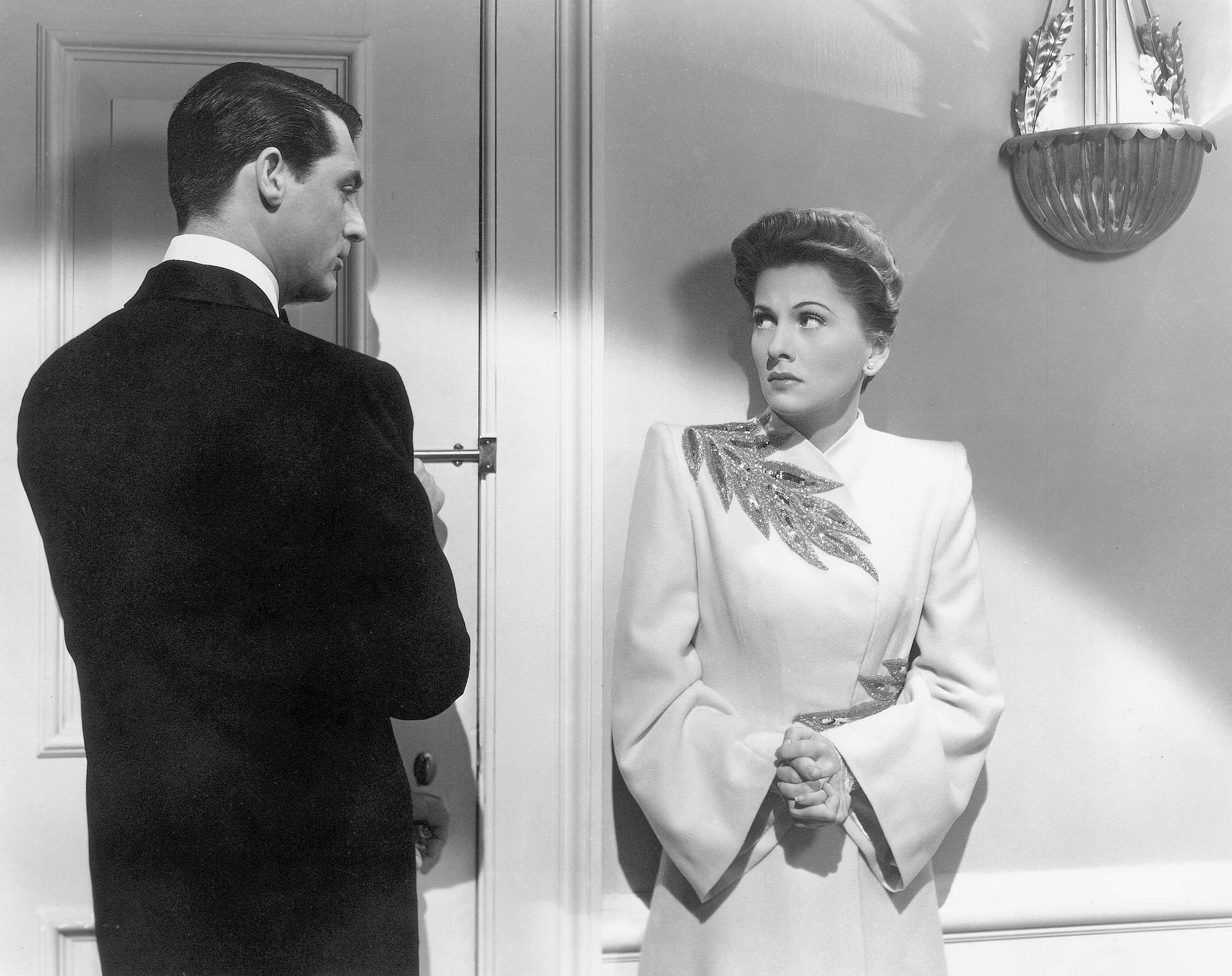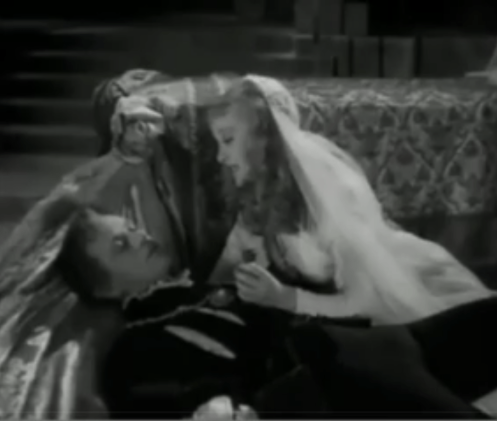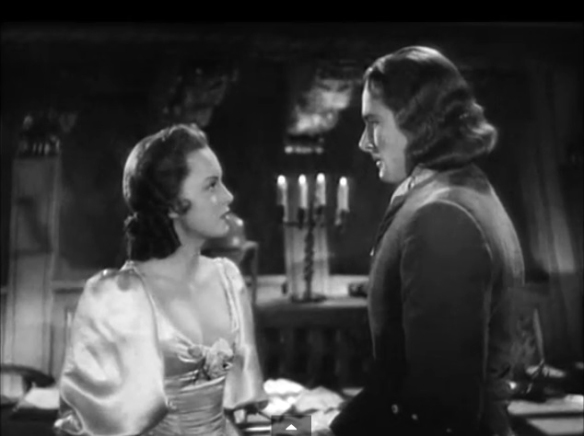In an effort to gain a greater appreciation for the breadth of both Bette Davis and Joan Crawford’s careers, we wanted to watch some of their films including a majority we hadn’t seen before.
Here are some of our thoughts on a trio of Davis movies from 1940s Warner Bros:
In This Your Life (1942)
It sounds like an impeccable title for a soap opera, and this presumption is not totally baseless. Here John Huston early on in his career takes on another Warner Bros. project. This one has no bearing on The Maltese Falcon or much of his later work. Instead, it became an outcropping of his contemporary fling with Olivia de Havilland.
As such, the movie is set up early around a local family. The father (Frank Craven) is a man with a benevolent twinkle in his eye. His wife (Billie Burke) is a bit of a drama queen playing favorites between her grown-up daughters. De Havilland is the sensible one, Roy, who is betrothed to be married soon. Stanley (Bettie Davis) is the feisty one with plenty of temerity. We never learn how their parents arrived at their naming conventions.
However, we do meet their uncle: ever-domineering, agitated uncle Fitzroy (Charles Coburn) with a touch of Rockefeller and an affinity for tough-minded folks such as himself. Namely, Stanley. And right about this time, given the tone, content, and world, we realize we have been handed a small-town melodrama easily playing rival to the likes of Kings Row. Max Steiner’s score rages quite liberally to accentuate the narrative unrest in case we had any lingering doubts.
In other words, the story feels worthy of Bette Davis. Her particularly protuberant eyes somehow undercut her actions. She doesn’t look all that bad, but as Kim Carnes famously sang in “Bette Davis Eyes,” “She’ll tease you. She’ll unease you. Just to please you.” She also has no scruples.
Dennis Morgan is featured in one of his more “daring” roles. He only remains a soft-spoken heartthrob for the majority of the movie. There are actual interludes where he’s petty and unstable. Of course, he can’t hold a candle to Davis or De Havilland.
Because it does become a drama of fluctuating love interests. George Brent starts the film with Davis (his perennial costar) but spends most of the movie being uplifted by De Havilland. It is a film mediated by the weak and the strong, the soft-hearted and the hard-hearted.
Olivia de Havilland comes off like most of her early, generally thankless ingenues, but there’s some sense she is inching toward something more substantial. We see it later as she evolves in front of us — hurt by her own sister — and vowing to never let something this egregious injure her again. She resolves to switch camps once and for all.
But I have yet to mention the film’s most intriguing character and arguably its lynchpin. Parry (Ernest Anderson) is the young black man who works for the family. However, he has ambitions that include becoming a lawyer. He is well-spoken and indirectly combats all the stereotypes piled up from years of dismissive cinema. It’s so refreshing to have a part that looks and feels so strikingly different than many of its contemporaries.
And he becomes far more crucial as the story progresses, thanks in part to the histrionic privilege of Stanley. She tries to use Parry in her own lies knowing intuitively the state of the world: A black man’s word will never hold up against hers (“It ain’t no use in this world”). In the end, Hollywood morality must prevail even if reality feels like a much murkier affair.
3.5/5 Stars
Now, Voyager (1942)
If films like All About Eve and What Ever Happened to Baby Jane? were in dialogue with Davis’s persona on and off-screen, then Now, Voyager seems totally representative of what her Hollywood image actually was. She’s the homely girl who in the same breath can transform into an immaculate beauty. This is her success story and grand fairy tale.
Mrs. Vale (Gladys Cooper) is a stern woman of authoritative means when it comes to ordering the life of her youngest child and ugly duckling Charlotte. I have difficulty looking at Bette Davis early on not because she’s “ugly,” but because they’ve tried so hard to make her frumpy, and it just looks a bit unnatural. In general, I find the deglamorization process a bit mystifying for these types of pictures.
Claude Rains provides his brand of benevolent authority that’s never threatening and lends a level of enlightened wisdom to the proceedings. Ilka Chase and Bonita Granville add levity, and I’d be remiss not to mention the incomparable Mary Wickes.
20 minutes in we see Davis emerge totally reincarnated as a regal creature capped in the most iconic of hats. Paul Henreid is rightfully pleased to make her acquaintance, and we have our movie.
The shorthand of glasses and ugly duckling syndrome being cast off feels rather simplistic, but I tried to stretch my imagination to make this into a Hans Christian Andersen world.
Paul Henreid lays the groundwork for Casablanca by playing the quintessential symbol of self-sacrifice, which in itself is such a powerful bulwark for romantic drama. In Now, Voyager his lot in life is made plain. Not that he goes grousing about it, but it’s evident he has a wife back home who plays the martyr. He’s tied down to her.
The moments between Davis and Henreid are like a dream and the rest of the movie feels like unnecessary baggage at times. That’s not to say we should cast off all the cares and responsibilities of life, but in the movies, these are the details that somehow get in the way. They distract from the reverie between two people.
Of course, it’s perfectly articulated in its most intimate and imitated act of affection, if not out and out chivalry — a man lighting up two cigarettes in his mouth and giving one to a lady. It plants Now, Voyager in a different era and perhaps this is part of the rose-colored allure.
I do appreciate what the lapse in the middle means for them both. He must go off, and she returns home to her mother’s house, prepared to do battle there. Because she is different, no longer a child anymore. Then, when she makes a big reveal in front of the family, she commands the room with the aplomb of a seasoned socialite.
Finally, the moment arrives and the two lovers are reunited when their private tete-a-tete crosses back into the real world at a dinner party. Alas, it cannot be so Charlotte must find ways to show her affection vicariously. She takes on a pet project — it’s a mission of mercy — to bless her man.
Although I will always subjectively like Greer Garson in Random Harvest or Gene Tierney in Ghost and Mrs. Muir better, I must admit Bette Davis is one for the ages. Try as I might, I could never take that away from her or begrudge the legacy she rightfully garnered for herself. Now, Voyager reminds us — no matter the pitfalls of the studio system on display — people like Davis really could turn it into a dream factory. In bandying about words like auteur, she certainly lays some claim to the label because the whole movie feels molded to her vision. She commands not just the screen but the entire production.
3.5/5 Stars
Mr. Skeffington (1944)
The opening plays like an Epstein Brothers riff off an Ernst Lubitsch drawing-room comedy. There’s an immediate comic lightness to the scenario. A row of eligible young men show up fashionably early to pay a visit to Fanny. It just so happens they all had the same idea.
They also adopt that slightly risible movie convention of constantly calling one another by first names, but of course, that’s part of the point. They’re partially hoodwinked when another man pops in and saunters up directly to Fanny’s quarters. No, he’s not another love interest but her solicitous older cousin George (Walter Able).
Davis is as airy-voiced and bright-eyed as ever doted up in the most flamboyant regalia. It covers up the salient fact that she and her brother are broke, and they have wealth in name only. They’ve all but used up everything their dear departed father ever bequeathed them.
Fanny’s a superficial girl, chatty and taken by the many whims of the wind. She’s turned off when the proclamation of war spoils her perfectly good dinner engagement with a quiet gentleman named Mr. Skeffington (Claude Rains).
There’s something about Davis and Rains together that’s easy to favor. I think they noticed it too, with Davis supposedly saying years later that he was her favorite costar. She went to bat for him, and he wound up in one of his most prominent roles. He’s never going to upstage Davis, and yet his wit is deceptively charming. It settles the movie and gives it an anchor.
Over time it feels like a gargantuan narrative, albeit not without its curiosities. One of those is the undercurrent of the whole picture. It starts with Skeffington himself. He is a man like so many remade after a childhood kicked off at Ellis Island. There’s a sense about him and his origins, even an inference here and there, but never anything outright.
And then, he sits at dinner with his daughter as a final goodbye. He has paid a settlement to his wife, they are getting a divorce, and his daughter will go live with her mother. She doesn’t want to leave him, and he explains part of what makes them different. He is Jewish. She is not.
In the year 1944 and the contemporary moment, it suddenly becomes a far more serious issue worth our time and consideration. Though within the movie it feels mostly like a loose end as Rains all but disappears from the picture. At least for the time being.
However, the movie evolves into something else almost like a vanitas portrait of the Charles Foster Kane variety. Vanity of vanities, thy name is Fanny Skeffington. It becomes evident that beauty is fleeting as her suitors stay young, and she continually staves off the advances of age.
She has a bit of a nervous breakdown; all her old boyfriends are long since gone, balding and gray-haired, and she looks in the mirror and her illusions are shattered by the lonely fragility staring back at her. Because time can be cruel. Her daughter (Marjorie Riordan) returns as a grown young woman and Fanny recognizes how the years have passed her by. She missed out on knowing her.
But it’s inevitable. Our primary players must have a reunion. The final scene has a real emotional import as we wait for Rains. It’s building to a crescendo and then falls into place as a weirdly contrived propaganda piece. The development is a bit disappointing because it means Skeffington isn’t able to explore all of its themes. Given its length, this is profoundly unfortunate.
3.5/5 Stars

















 The year is 1866. The Civil War is over and anyone with vision is moving west. One such outpost is Kansas where the railway is replacing the stagecoach. It’s a world of iron men and iron horses. Because a place like the notorious Dodge City is a “town that knew no ethics but cash and killing.”
The year is 1866. The Civil War is over and anyone with vision is moving west. One such outpost is Kansas where the railway is replacing the stagecoach. It’s a world of iron men and iron horses. Because a place like the notorious Dodge City is a “town that knew no ethics but cash and killing.”

 There is a lineage of psychological dramas most notably including the likes of Shock Corridor and One Flew Over the Cuckoos Nest. But one of their primary predecessors was The Snake Pit which is a haunting, inscrutable and thought-provoking film in its own right.
There is a lineage of psychological dramas most notably including the likes of Shock Corridor and One Flew Over the Cuckoos Nest. But one of their primary predecessors was The Snake Pit which is a haunting, inscrutable and thought-provoking film in its own right.